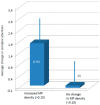Effects of a Lutein and Zeaxanthin Intervention on Cognitive Function: A Randomized, Double-Masked, Placebo-Controlled Trial of Younger Healthy Adults
- PMID: 29135938
- PMCID: PMC5707718
- DOI: 10.3390/nu9111246
Effects of a Lutein and Zeaxanthin Intervention on Cognitive Function: A Randomized, Double-Masked, Placebo-Controlled Trial of Younger Healthy Adults
Abstract
Background: Past studies have suggested that higher lutein (L) and zeaxanthin (Z) levels in serum and in the central nervous system (as quantified by measuring macular pigment optical density, MPOD) are related to improved cognitive function in older adults. Very few studies have addressed the issue of xanthophylls and cognitive function in younger adults, and no controlled trials have been conducted to date to determine whether or not supplementation with L + Z can change cognitive function in this population. Objective: The purpose of this study was to determine whether or not supplementation with L + Z could improve cognitive function in young (age 18-30), healthy adults. Design: A randomized, double-masked, placebo-controlled trial design was used. Fifty-one young, healthy subjects were recruited as part of a larger study on xanthophylls and cognitive function. Subjects were randomized into active supplement (n = 37) and placebo groups (n = 14). MPOD was measured psychophysically using customized heterochromatic flicker photometry. Cognitive function was measured using the CNS Vital Signs testing platform. MPOD and cognitive function were measured every four months for a full year of supplementation. Results: Supplementation increased MPOD significantly over the course of the year, vs. placebo (p < 0.001). Daily supplementation with L + Z and increases in MPOD resulted in significant improvements in spatial memory (p < 0.04), reasoning ability (p < 0.05) and complex attention (p < 0.04), above and beyond improvements due to practice effects. Conclusions: Supplementation with L + Z improves CNS xanthophyll levels and cognitive function in young, healthy adults. Magnitudes of effects are similar to previous work reporting correlations between MPOD and cognition in other populations.
Keywords: attention; cognition; reasoning; visual memory; xanthophylls.
Conflict of interest statement
Authors L.M.R.-H. and B.R.H. have received honoraria from Abbott Nutrition for presentation of research findings and L.R.H. was employed by Abbott Nutrition for a portion of the data collection period. Author J.H.B. was an employee of Abbott Nutrition. No other authors have conflicts of interest to disclose.
Figures




Similar articles
-
Effects of macular xanthophyll supplementation on brain-derived neurotrophic factor, pro-inflammatory cytokines, and cognitive performance.Physiol Behav. 2019 Nov 1;211:112650. doi: 10.1016/j.physbeh.2019.112650. Epub 2019 Aug 16. Physiol Behav. 2019. PMID: 31425700 Clinical Trial.
-
A double-blind, placebo-controlled study on the effects of lutein and zeaxanthin on photostress recovery, glare disability, and chromatic contrast.Invest Ophthalmol Vis Sci. 2014 Dec 2;55(12):8583-9. doi: 10.1167/iovs.14-15573. Invest Ophthalmol Vis Sci. 2014. PMID: 25468896 Clinical Trial.
-
Serum and retinal responses to three different doses of macular carotenoids over 12 weeks of supplementation.Exp Eye Res. 2016 Oct;151:1-8. doi: 10.1016/j.exer.2016.07.005. Epub 2016 Jul 15. Exp Eye Res. 2016. PMID: 27426932 Clinical Trial.
-
Effect of macular pigment carotenoids on cognitive functions: A systematic review.Physiol Behav. 2022 Oct 1;254:113891. doi: 10.1016/j.physbeh.2022.113891. Epub 2022 Jun 23. Physiol Behav. 2022. PMID: 35752349
-
Lutein, Zeaxanthin and Meso-zeaxanthin Supplementation Associated with Macular Pigment Optical Density.Nutrients. 2016 Jul 12;8(7):426. doi: 10.3390/nu8070426. Nutrients. 2016. PMID: 27420092 Free PMC article. Review.
Cited by
-
Sea Buckthorn Oil as a Valuable Source of Bioaccessible Xanthophylls.Nutrients. 2019 Dec 27;12(1):76. doi: 10.3390/nu12010076. Nutrients. 2019. PMID: 31892138 Free PMC article.
-
The Effect of Lutein on Eye and Extra-Eye Health.Nutrients. 2018 Sep 18;10(9):1321. doi: 10.3390/nu10091321. Nutrients. 2018. PMID: 30231532 Free PMC article. Review.
-
Dunalialla salina microalgea and its isolated zeaxanthin mitigate age-related dementia in rats: Modulation of neurotransmission and amyloid-β protein.Toxicol Rep. 2021 Nov 29;8:1899-1908. doi: 10.1016/j.toxrep.2021.11.021. eCollection 2021. Toxicol Rep. 2021. PMID: 34926168 Free PMC article.
-
Cordyceps militaris: An Overview of Its Chemical Constituents in Relation to Biological Activity.Foods. 2021 Oct 30;10(11):2634. doi: 10.3390/foods10112634. Foods. 2021. PMID: 34828915 Free PMC article. Review.
-
Natural pigments: innovative extraction technologies and their potential application in health and food industries.Front Pharmacol. 2025 Jan 8;15:1507108. doi: 10.3389/fphar.2024.1507108. eCollection 2024. Front Pharmacol. 2025. PMID: 39845791 Free PMC article. Review.
References
-
- Bourre J.M. Effects of nutrients (in food) on the structure and function of the nervous system: Update on dietary requirements for brain. Part 1: Micronutrients. J. Nutr. Health Aging. 2006;10:377–385. - PubMed
-
- Carlson S.E., Carver J.D., House S.G. High fat diets varying in ratios of polyunsaturated to saturated fatty acid and linoleic to linolenic acid: A comparison of rat neural and red cell membrane phospholipids. J. Nutr. 1986;116:718–725. - PubMed
-
- Cook C.C., Thomson A.D. B-complex vitamins in the prophylaxis and treatment of Wernicke-Korsakoff syndrome. Br. J. Hosp. Med. 1997;57:461–465. - PubMed
Publication types
MeSH terms
Substances
LinkOut - more resources
Full Text Sources
Other Literature Sources
Medical
Miscellaneous

